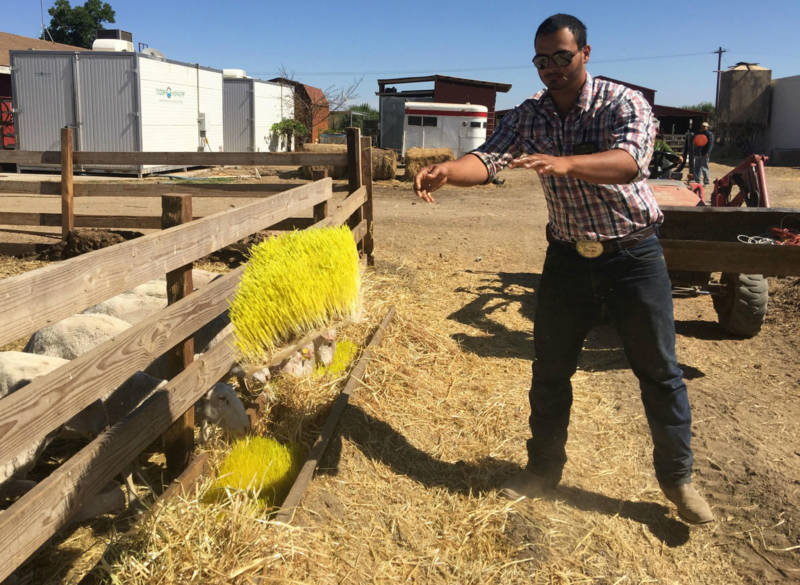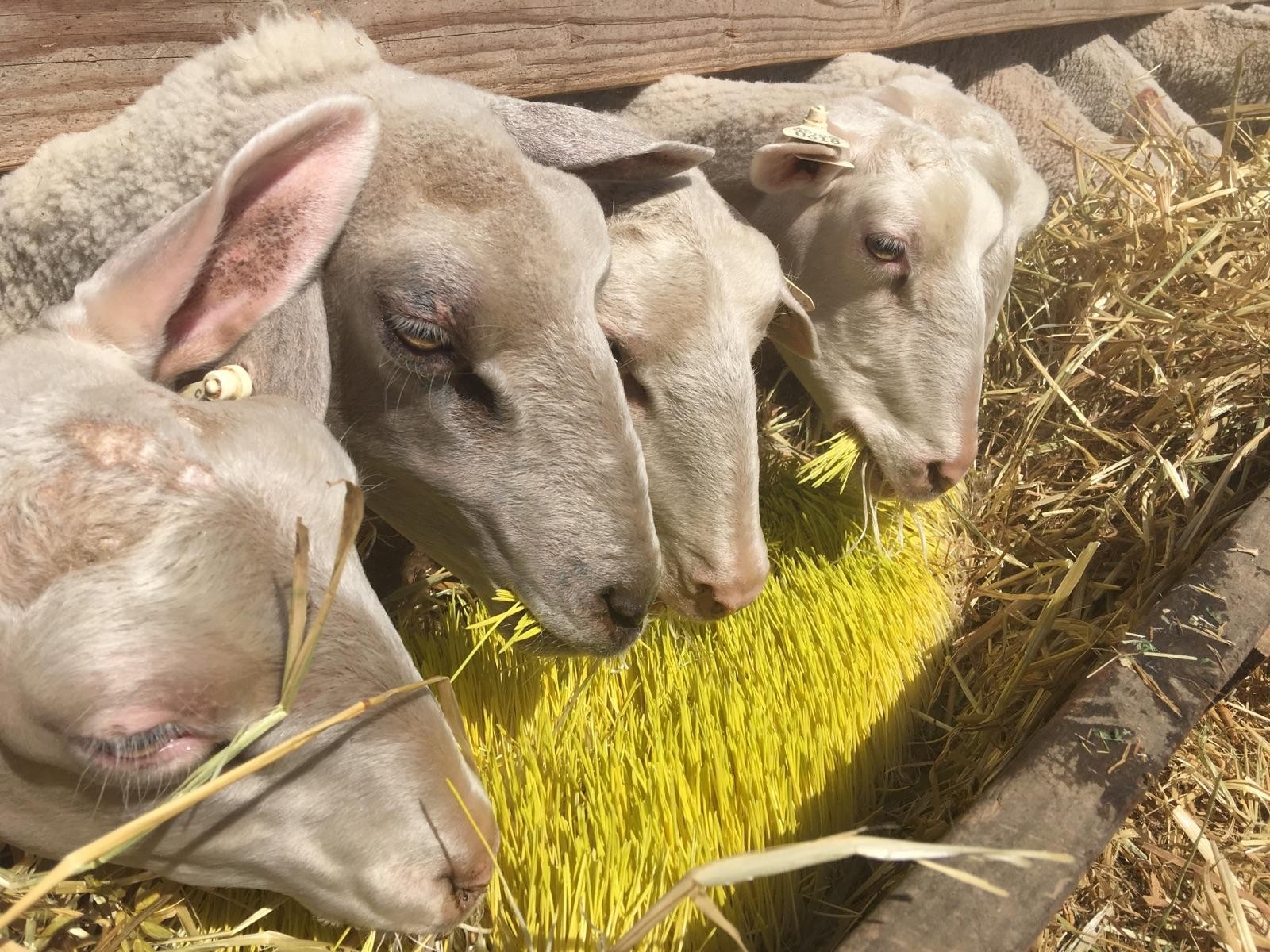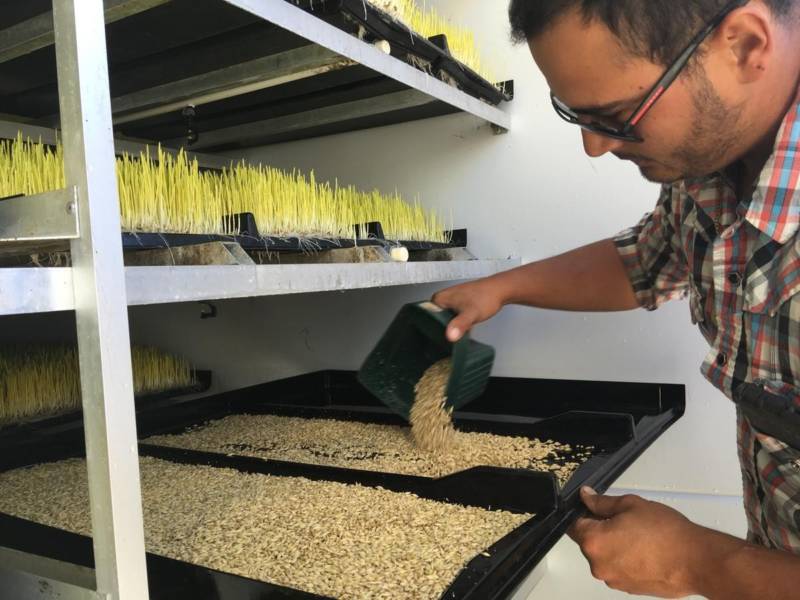On Golden Valley Farm north of Madera, Mario Daccarett’s employees are milking 500 sheep in rounds of 12. As they hook up long clear suction cups to each animal’s teats, milk drains down tubes into a cold tank. This creamy milk eventually is turned into cheese and sold at places like Whole Foods or Bi-Rite Market in San Francisco.
“They tell me that our Golden Ewe cheese is the best for grilled cheese sandwich ever,” Daccarett says.
Daccarett says he gets about 800 pounds of milk a year from each ewe. To make that much milk it takes a lot of feed — like oats and hay — to satisfy this herd’s constant appetite. And to cut the cost of all that feed Daccarett says he has a secret ingredient that enriches his cheese while at the same time saves water: sprouted barley grown indoors.
“We plant every day and we harvest every day and it takes six days to complete the cycle,” says Daccarett. “So whatever we plant today in six days will be ready to be fed.”
Growing barley as feed isn’t a new practice, but Daccarrett’s method of growing barley seeds is different. He sprouts the seeds inside shipping containers using hydroponic technology and indoor lighting. By doing so he says he only uses two percent of the water it would take to grow the crop using traditional farming methods.

(Ezra David Romero/KQED)
“I think that’s a big advantage if you don’t have a lot of land,” Daccarrett says. “You can produce a tremendous amount of feed in a very, very small area with a very little amount of water”


